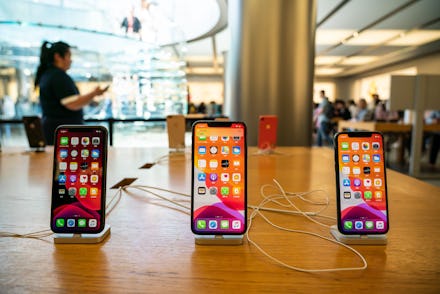Apple's next iPhone may only cost $400

Any time Apple releases a new product, discussions around pricing seem to dominate and that's fair. Nowadays, newer iPhone models can cost almost as much as a decent laptop. If you've been waiting for a bargain, your patience might be paying off. According to reports from MacRumors, a $400 Apple iPhone SE 2 might be coming next year.
The rumor about a new version of the SE first came out earlier this month. While these plans aren't confirmed by Apple itself, the news comes from notable analyst Ming-Chi Kuo. The iPhone SE 2 can be expected to arrive sometime in early 2020 and given that Apple likes to host special events during March, that's probably a good month to keep your eyes on.
The iPhone SE 2 is definitely a great bargain coming from Apple whose newest iPhones can retail for over $1,000. However, don't expect that the iPhone SE 2 will be comparable to models like the iPhone X or iPhone 11.
Instead, the iPhone SE 2's design will be more similar to the iPhone 8. That's good news if you're still unsure of Apple's Face ID authentication, though, because the iPhone SE 2 is rumored to bring back the Home button.
When it comes to colors, Kuo reported that Apple will keep it simple with space gray, silver, and red as options.
If the price point makes you suspicious, just remember that the iPhone 8 currently costs $449 for the 64 GB model. Apple may also be trying to catch up to Google which has a comparable $400 phone, too.
Sure, the iPhone SE 2 won't have all the bells and whistles of other models. But, that's not really the point of the iPhone SE 2. This phone will most likely be a popular option for people who are still using an iPhone 6 or iPhone 6s, Kuo reported.
In other words, the iPhone SE 2 is meant to appeal to Apple users who just aren't convinced that they need to be paying close to (or over) $1,000 for a new smartphone.